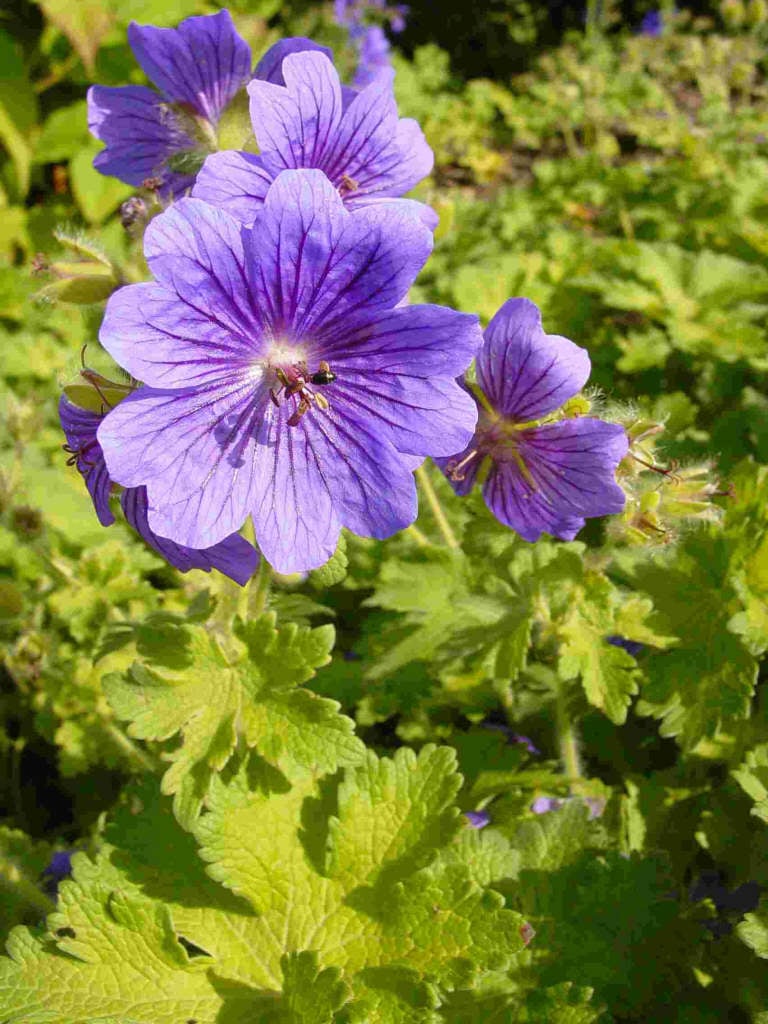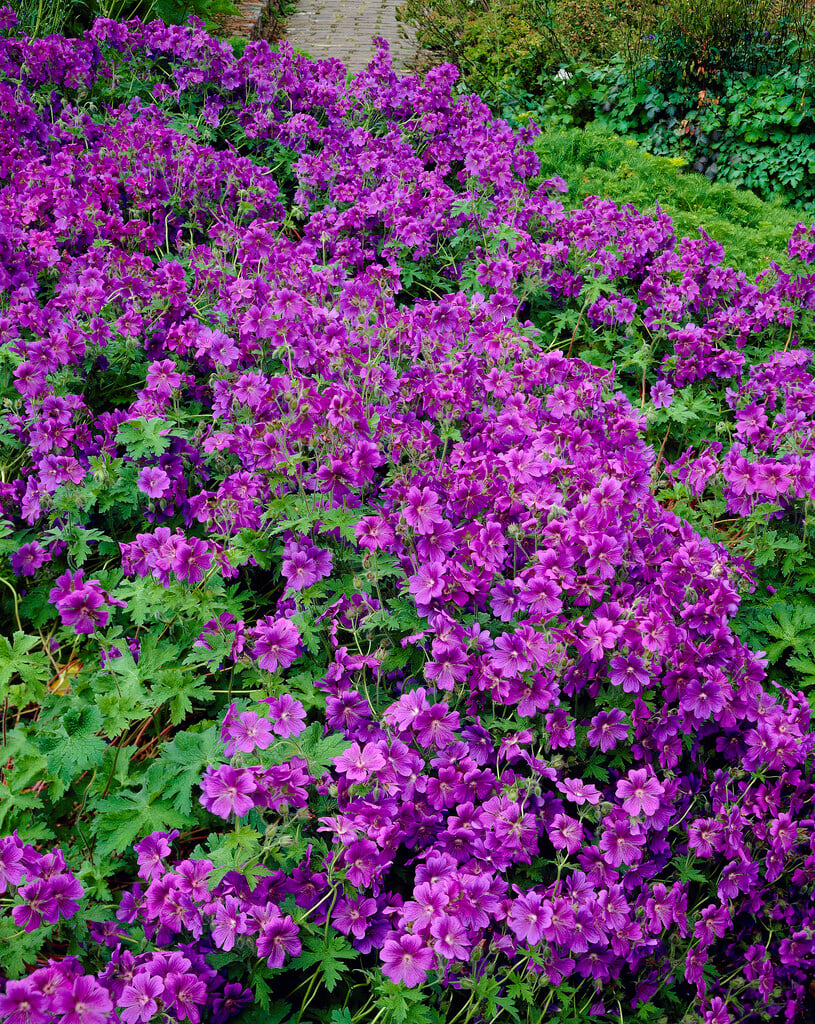Geranium × magnificum

purple cranesbill
A clump-forming perennial to 70cm tall, with lobed, hairy green leaves and dark-veined, rich violet flowers 4-5cm wide, in early summer; very prolific, but a short flowering season
Synonyms
Geranium platypetalum misappliedGeranium ibericum var. platypetalum misapplied
see moreGeranium ibericum misapplied
Size
Ultimate height
0.5–1 metresTime to ultimate height
2–5 yearsUltimate spread
0.5–1 metresGrowing conditions
Moisture
Moist but well–drained, Well–drainedpH
Acid, Alkaline, NeutralColour & scent
| Stem | Flower | Foliage | Fruit | |
| Spring | Green | |||
|---|---|---|---|---|
| Summer | Blue | Green | ||
| Autumn | ||||
| Winter |
Position
- Full sun
- Partial shade
Aspect
West–facing or East–facing or South–facing
Exposure
Exposed or Sheltered Hardiness
H7Botanical details
- Family
- Geraniaceae
- Native to GB / Ireland
- No
- Foliage
- Deciduous
- Habit
- Bushy
- Genus
Geranium can be annuals, biennials and perennials, herbaceous or evergreen, with rounded, usually palmately lobed or divided leaves, and lax inflorescences of rounded, 5-petalled flowers
- Name status
Correct
How to grow
Cultivation
Grows best in moderately fertile, well-drained soil in full sun or partial shade, but most soils (unless waterlogged) in either sun or shade are tolerated. Some plants may flop and are best staked
Propagation
Propagate by division between early autumn and early spring or cut back plants after flowering in summer, then divide, replant and water well
Suggested planting locations and garden types
- Gravel garden
- Cottage and informal garden
- Flower borders and beds
- Underplanting of roses and shrubs
- Ground cover
Pruning
Remove flowered stems and old leaves to encourage the production of fresh leaves and flowers. New foliage quickly appears if cut down after flowering
Pests
May be damaged by vine weevil larvae, Geranium sawfly larvae, capsid bug, slugs and snails
Diseases
May be susceptible to downy mildews and powdery mildews
Love gardening
Sign up to receive regular gardening tips, inspiration, offers and more
View our Privacy Policy
Get involved
The Royal Horticultural Society is the UK’s leading gardening charity. We aim to enrich everyone’s life through plants, and make the UK a greener and more beautiful place.

